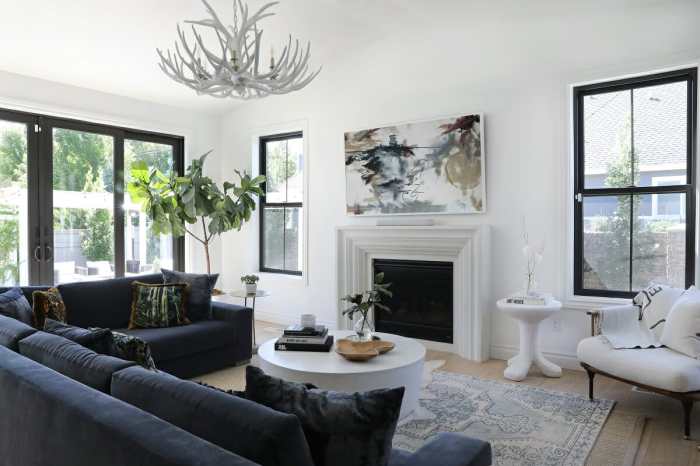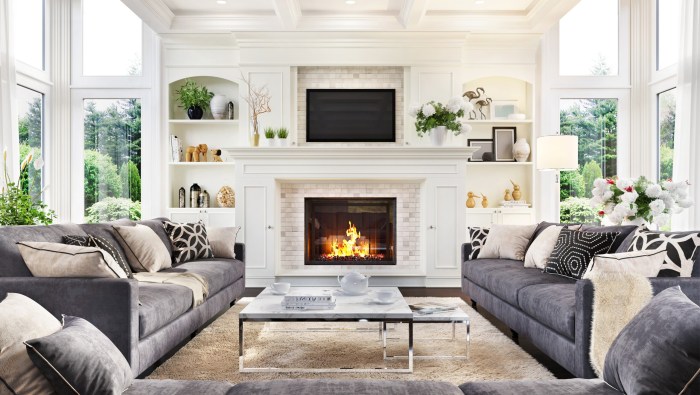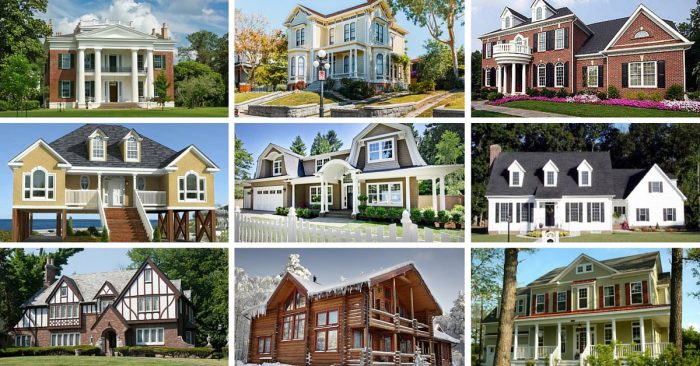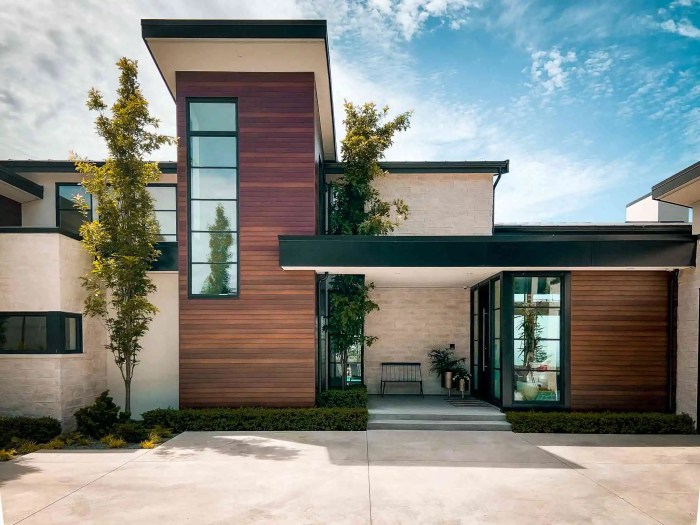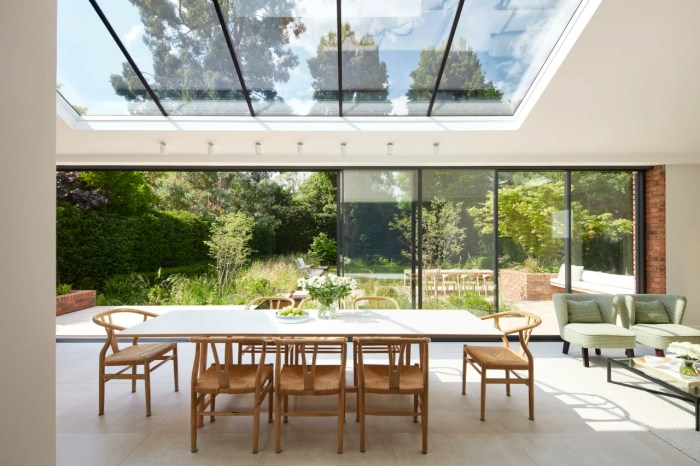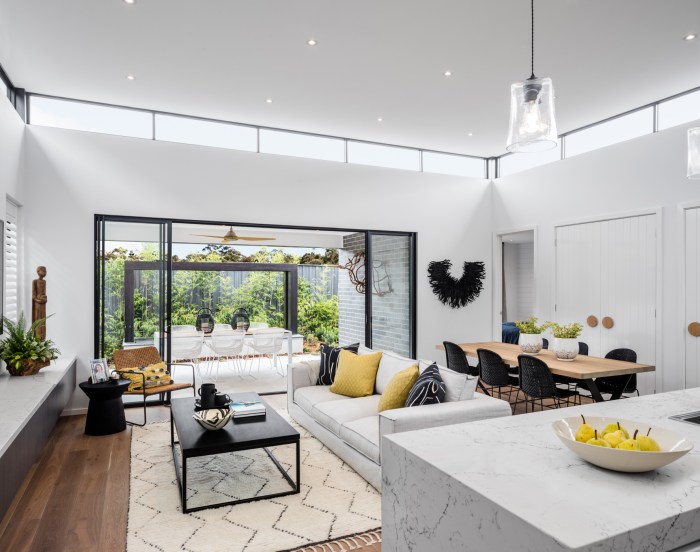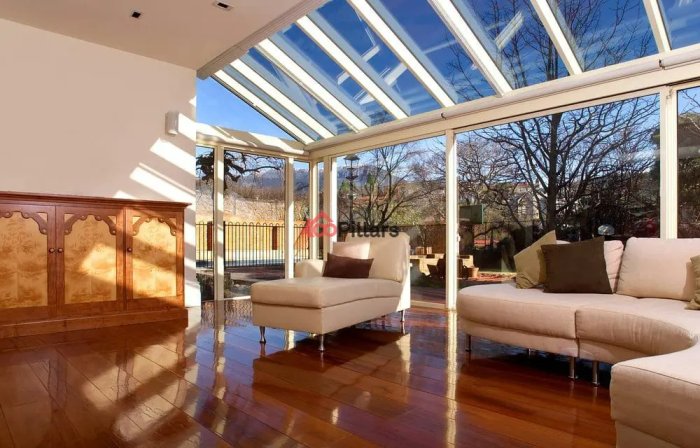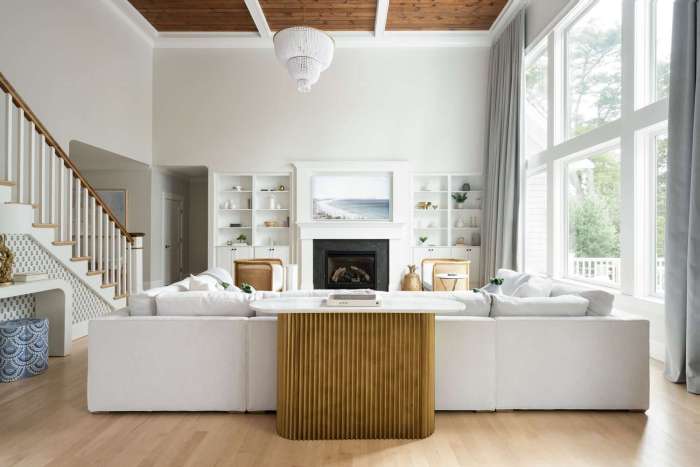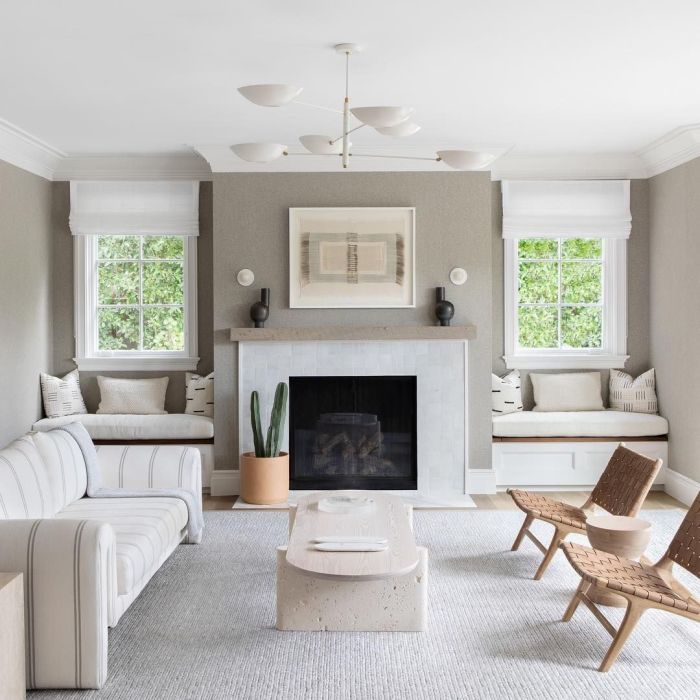How to Make Your Home Transforming your house into a stylish home isn’t about following fleeting trends; it’s about creating a space that reflects your personality and enhances your well-being. This journey involves understanding the science of spatial design, the psychology of color, and the art of thoughtful curation. We’ll explore the principles of decluttering, color theory, furniture arrangement, lighting design, and the strategic use of textiles and accessories – all underpinned by evidence-based design strategies to achieve a cohesive and aesthetically pleasing living environment.
From maximizing space through efficient organization to harnessing the power of light and color to evoke specific moods, we’ll delve into practical steps, supported by scientific research on how our environment affects our cognitive and emotional states. The goal is not just a visually appealing home, but a sanctuary that promotes relaxation, productivity, and a sense of calm. Understanding the interplay between these elements will unlock your potential to create a truly stylish and functional living space.
Decluttering and Organization
Creating a stylish home begins with a foundation of order and calm. A cluttered space, from a scientific perspective, directly impacts our cognitive function, increasing stress and hindering creativity. Decluttering isn’t just about aesthetics; it’s about optimizing your environment for well-being and maximizing the potential of your living space. This process, when approached systematically, transforms a chaotic environment into a sanctuary of style and functionality.
Step-by-Step Room Decluttering
Decluttering should be approached methodically, one room at a time. Begin by emptying each area completely. This allows for a fresh perspective and prevents overlooking hidden clutter. Categorize items into three piles: keep, donate/sell, and trash. For the “keep” pile, immediately put away items that belong in that room.
The donation/sell pile should be dealt with promptly to avoid re-cluttering. The trash pile should be discarded immediately. This process leverages the psychological principle of “cognitive closure,” providing a sense of accomplishment and motivating continued progress. Remember to focus on functionality; if an item hasn’t been used in a year, it likely serves little purpose.
Organizing Belongings with Storage Solutions
Effective organization hinges on strategic storage solutions tailored to your needs and the characteristics of each room. Utilizing vertical space, for instance, significantly increases storage capacity without compromising floor space. This is in line with principles of spatial optimization used in architecture and engineering. Consider the following storage solutions:
| Storage Solution | Pros | Cons |
|---|---|---|
| Modular shelving units | Highly adaptable, customizable to space and needs, relatively inexpensive. | Can appear visually cluttered if not organized carefully; may require assembly. |
| Under-bed storage containers | Maximizes unused space, keeps items hidden and organized. | Requires careful selection to ensure items are easily accessible; some containers may be bulky. |
| Wall-mounted cabinets | Saves floor space, provides ample storage, can enhance the room’s aesthetic. | Can be expensive to install; requires professional installation in some cases. |
Minimizing Visual Clutter
Visual clutter overwhelms the eye and detracts from the overall style. Surfaces should be kept as clear as possible. Consider the “one-in, one-out” rule: for every new item brought into the home, an existing item must be removed. Wall decor should be curated thoughtfully. Too much wall art can create a sense of visual noise.
Instead, focus on a few key pieces that complement the room’s style and color palette. This adheres to the design principle of “visual hierarchy,” guiding the eye to focal points and creating a sense of balance.
Impact of Decluttering on Home Style
A decluttered space immediately enhances the overall style and feel of a home. It allows architectural features and design elements to stand out, creating a sense of spaciousness and serenity. This aligns with principles of minimalist design, which prioritize functionality and clean lines. By removing visual distractions, you create a more cohesive and polished aesthetic, allowing the true style of your home to shine through.
The psychological impact is significant as well; a tidy space promotes relaxation and reduces stress, creating a more inviting and enjoyable living environment.
Color Palette and Paint Selection
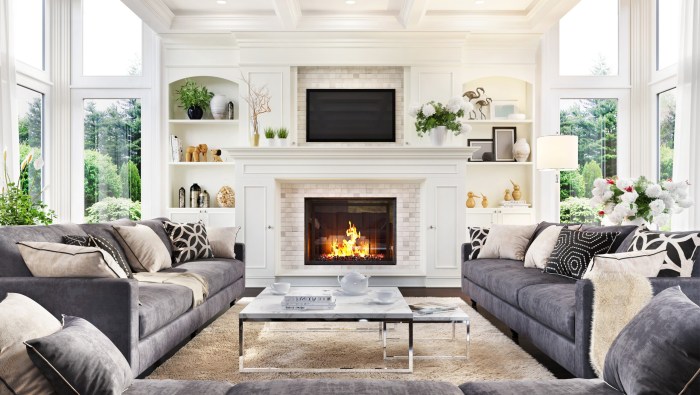
Creating a stylish home hinges significantly on the thoughtful selection and application of color. Color psychology plays a crucial role in shaping the atmosphere and influencing our moods within each space. Understanding the impact of different hues and skillfully coordinating them across your home is key to achieving a cohesive and aesthetically pleasing design. This involves considering not only personal preferences but also the functional purpose of each room and the available natural and artificial lighting.
Color Palette Cohesion and Room Function
A successful color palette requires careful consideration of how colors interact and how they affect the perceived size and feel of a room. For instance, light and airy colors, such as pastels or soft whites, can make a small room feel larger and more open. Conversely, darker, richer colors can create a sense of intimacy and warmth in larger spaces.
The function of a room also dictates color choices. A bedroom might benefit from calming blues or greens, promoting relaxation, while a kitchen might be energized by warmer yellows or oranges, stimulating appetite and activity. Bathrooms often utilize cool blues and greens to evoke a sense of cleanliness and tranquility. The interplay between color and function is a powerful tool in interior design.
Psychological Impact of Color
The impact of color on mood and atmosphere is well-documented. Scientific studies have shown that different wavelengths of light affect our brains in various ways. For example, warm colors like red and orange are associated with excitement, energy, and appetite. They can stimulate the nervous system and increase heart rate. Conversely, cool colors like blue and green are linked to calmness, tranquility, and relaxation.
They have a calming effect, lowering heart rate and blood pressure. Yellow is often associated with happiness and optimism, while purple can evoke feelings of luxury and sophistication. Understanding these psychological effects allows for intentional color choices to create the desired ambiance in each room.
Warm and Cool Color Palettes
| Warm Color Palettes | Cool Color Palettes |
|---|---|
| Examples: Reds, oranges, yellows, browns. Evokes feelings of warmth, comfort, and energy. Think of a sunny Tuscan villa or a cozy autumnal scene. | Examples: Blues, greens, purples, grays. Evokes feelings of calmness, serenity, and sophistication. Think of a serene coastal cottage or a minimalist Scandinavian apartment. |
| Suitable for: Living rooms, dining rooms, kitchens (to stimulate appetite), bedrooms (in muted tones). | Suitable for: Bathrooms, bedrooms (to promote relaxation), home offices (to improve focus – in carefully chosen shades). |
Paint Finishes and Room Suitability
The choice of paint finish significantly impacts the final look and feel of a room. Different finishes offer varying levels of sheen and durability.Matte finishes offer a flat, non-reflective surface, ideal for hiding imperfections in walls. They are best suited for living rooms or bedrooms where a softer, more relaxed atmosphere is desired. Eggshell finishes have a slightly more sheen than matte, offering better washability and durability.
They are a good all-around choice for many rooms. Satin finishes are more durable and washable than eggshell, making them suitable for high-traffic areas like hallways or kitchens. Gloss finishes are the most durable and washable, reflecting the most light. They are often used in bathrooms or kitchens where easy cleaning is essential, though the high sheen may not be suitable for every aesthetic.
Furniture Selection and Arrangement
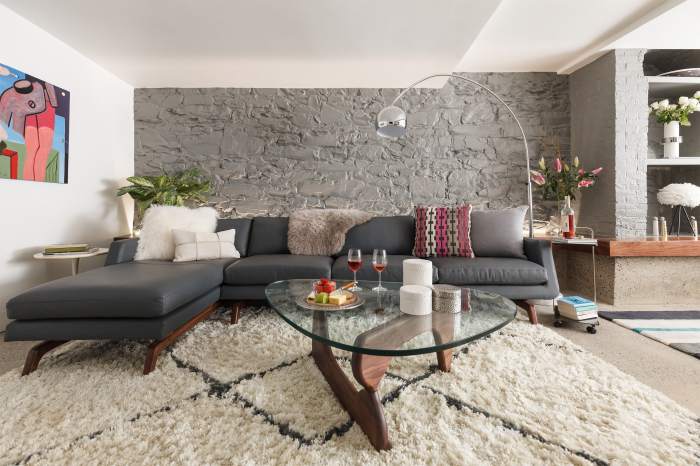
Creating a stylish home involves a deep understanding of how furniture interacts with space and personal style. The careful selection and arrangement of furniture are not merely aesthetic choices; they directly impact the functionality, flow, and overall ambiance of a room. Choosing the right pieces and positioning them strategically can transform a cramped space into a welcoming and efficient environment.
Ignoring these principles can lead to a cluttered and uninviting atmosphere, negating the positive impact of even the most carefully chosen color palette and décor.The science of spatial perception plays a crucial role in furniture selection. Our brains process visual information to perceive size, distance, and relationships between objects. Furniture that is too large for a room will overwhelm the space, making it feel smaller and more claustrophobic.
Conversely, furniture that is too small can appear lost and insignificant, failing to anchor the room’s design. Understanding these principles allows for the intentional selection of pieces that create a sense of balance and proportion.
Furniture Selection Based on Room Size and Style
The first step in furniture selection is assessing the room’s dimensions and its intended purpose. A small living room requires furniture with a smaller footprint, prioritizing functionality and versatility. For instance, a sofa bed can serve as both seating and sleeping accommodation, maximizing space efficiency. In contrast, a large living room allows for more expansive furniture choices, potentially incorporating a larger sectional sofa, multiple armchairs, and a substantial coffee table.
The style of the room should also dictate the furniture’s aesthetic. A minimalist room benefits from clean lines and uncluttered designs, while a traditional room may incorporate ornate pieces and rich textures. The furniture should complement, not clash with, the established style. For example, a mid-century modern sofa with sleek lines and tapered legs would be incongruous in a room decorated with Victorian-era antiques.
Optimizing Space and Flow Through Furniture Arrangement
Effective furniture arrangement is key to maximizing space and improving the flow of movement within a room. Poorly arranged furniture can create bottlenecks and visual clutter, hindering the room’s functionality.
- Anchoring the Room: Begin by placing the largest piece of furniture, such as a sofa or bed, against a wall to create a visual anchor. This provides a sense of stability and defines the primary seating or sleeping area. For example, in a living room, a large sofa positioned against the longest wall creates a natural focal point.
- Defining Zones: Divide the room into functional zones using furniture placement. In a living room, this might involve creating a conversation area with sofas and armchairs, a reading nook with a comfortable armchair and a floor lamp, and an entertainment area with a television and media console. This zoning technique prevents the room from feeling chaotic and unorganized.
- Maintaining Traffic Flow: Ensure that there is ample space for easy movement between furniture pieces. Leave at least 3 feet of walkway space to prevent feeling cramped or restricted. Avoid placing furniture in a way that creates visual barriers or obstructs doorways.
- Using Negative Space: Embrace empty space. Don’t overcrowd the room with furniture. Allowing for some negative space makes the room feel more spacious and less cluttered. This visual breathing room enhances the overall aesthetic appeal.
Balancing Style and Functionality in Furniture Selection
Stylish furniture doesn’t have to be impractical. Many modern designs prioritize both aesthetics and functionality. Consider features like built-in storage, convertible furniture, and multi-purpose pieces. For instance, an ottoman with built-in storage can provide both seating and extra storage space, optimizing functionality in a small room. Similarly, a sofa bed combines seating and sleeping functions, ideal for guest rooms or small apartments.
Choosing furniture with durable, high-quality materials ensures longevity and maintains the room’s stylish appearance over time.
Comparing and Contrasting Furniture Styles
Different furniture styles possess distinct characteristics that reflect historical periods, cultural influences, and design philosophies.
- Mid-century Modern: Characterized by clean lines, tapered legs, organic shapes, and the use of materials such as teak and walnut. Think iconic Eames chairs and sleek, low-profile sofas. This style emphasizes functionality and simplicity.
- Minimalist: Prioritizes simplicity, functionality, and clean lines. Minimalist furniture often features neutral colors, simple shapes, and a lack of ornamentation. The goal is to create a sense of calm and order.
- Traditional: Emphasizes ornate details, rich fabrics, and classic shapes. Traditional furniture often features carved wood, intricate upholstery, and a formal aesthetic. This style evokes a sense of history and elegance.
Lighting and Ambiance
The interplay of light and shadow is fundamental to creating a stylish and inviting home. Understanding the different types of lighting and how they interact with the space is crucial for achieving the desired ambiance. Scientifically, our perception of a room’s atmosphere is heavily influenced by the quality, quantity, and color temperature of its lighting, impacting mood, productivity, and even our physiological responses.
Effective lighting design involves a layered approach, combining ambient, task, and accent lighting to create a visually appealing and functionally comfortable environment. This approach mimics natural daylight, which typically features a mix of bright, diffused light and focused sunbeams, resulting in a dynamic and engaging visual experience.
Types of Lighting and Their Roles
Three main types of lighting work together to create a complete lighting scheme: ambient, task, and accent. Each serves a distinct purpose, and a well-balanced combination is key to a stylish and functional space.
Ambient lighting provides overall illumination, setting the mood and general brightness of a room. Think of it as the base layer of light, like the soft glow of a sunrise. Task lighting, on the other hand, is focused and directed, designed to illuminate specific areas for activities like reading or cooking. It’s like a spotlight, highlighting the area where attention is needed.
Accent lighting, finally, is used to highlight architectural features, artwork, or other decorative elements, adding depth and visual interest. It acts as the dramatic flair, bringing out specific details and textures.
Choosing Light Fixtures to Enhance Style
Selecting appropriate light fixtures is paramount in achieving a cohesive and stylish interior. The style of the fixture should complement the overall design aesthetic of the room, while its functionality should address the lighting needs. Consider the size of the room, ceiling height, and the desired level of illumination when making your choices.
| Fixture Type | Room Suitability | Style Example | Lighting Type |
|---|---|---|---|
| Chandelier | Dining room, living room (high ceilings) | Crystal chandelier for a formal look; wrought iron chandelier for a rustic look | Ambient/Accent |
| Pendant Light | Kitchen island, dining nook, hallway | Modern minimalist pendant; farmhouse-style pendant | Task/Ambient |
| Recessed Lighting | Kitchen, bathroom, hallways | Sleek, minimalist designs; adjustable directional lights | Ambient/Task |
| Floor Lamp | Living room, bedroom, reading nook | Arc lamp for a modern feel; tripod lamp for a bohemian vibe | Task/Ambient |
Highlighting Architectural Features and Artwork with Lighting
Strategic lighting can dramatically enhance the aesthetic appeal of a home by highlighting its architectural details and artwork. This technique involves using directional light sources, such as spotlights or track lighting, to draw attention to specific elements. For example, recessed lighting can accentuate high ceilings or crown molding, while strategically placed spotlights can showcase a prized painting or sculpture.
The angle and intensity of the light can significantly alter the perceived texture and depth of the highlighted feature.
Consider the color temperature of the light source as well. Warmer light (lower Kelvin values) can create a cozy and inviting atmosphere, while cooler light (higher Kelvin values) can provide a more modern and crisp look. Experiment with different light sources and angles to achieve the most flattering and impactful illumination.
The Impact of Natural Light
Natural light is a powerful design element that should be maximized whenever possible. Studies have shown that exposure to natural light improves mood, sleep quality, and overall well-being. From a design perspective, natural light creates depth and dimension, enhancing the visual appeal of a space. Maximizing natural light involves strategically placing windows, using sheer curtains or blinds to diffuse light, and employing light-colored paint and furniture to reflect light throughout the room.
Mirrors strategically placed can also help bounce natural light deeper into the room, effectively amplifying its effect. The angle of the sun throughout the day will also influence the quality and direction of light, creating dynamic shifts in the room’s ambiance.
Incorporating Textiles and Accessories
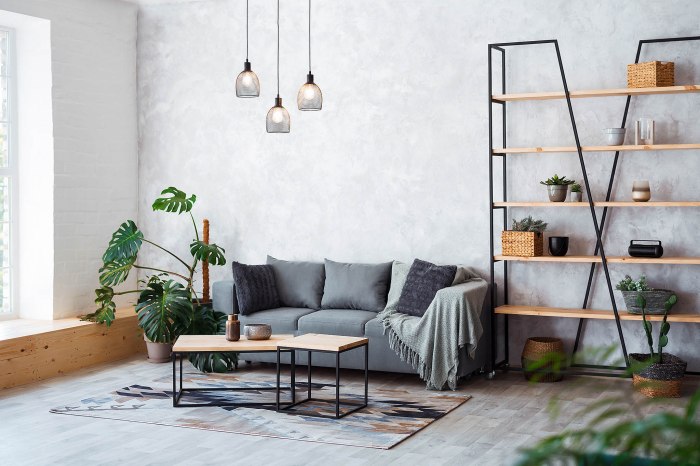
The strategic use of textiles and accessories is paramount in transforming a house into a stylish home. These elements aren’t mere decorations; they are powerful tools that modulate texture, introduce color, and significantly impact the perceived warmth and comfort of a space. Understanding their interplay with the underlying design principles – color palette, furniture arrangement, and lighting – allows for a cohesive and aesthetically pleasing result.
The science of visual perception dictates that our brains process textures and colors in a specific way, influencing our emotional response to the environment. Therefore, careful consideration of these elements is crucial for creating a space that feels both inviting and visually stimulating.
Textiles, in particular, offer a multitude of possibilities. Their inherent properties, such as softness, drape, and sheen, interact with light in unique ways, altering the perceived spatial dimensions and mood of a room. Accessories, on the other hand, act as focal points, adding personality and reflecting the homeowner’s individual taste. The interplay between these two categories forms the foundation of a truly personalized and stylish interior.
Textile Selection for Enhanced Texture, Color, and Warmth
The selection of textiles – curtains, rugs, and throws – is a crucial step in establishing the desired ambiance. Curtains, for instance, can soften harsh light, adding a layer of privacy while contributing to the overall color scheme. A heavy velvet curtain in a deep jewel tone can create a sense of intimacy and luxury, while sheer linen curtains in a lighter color will allow ample natural light to flood the room, fostering a feeling of airy spaciousness.
Rugs, similarly, anchor furniture arrangements and introduce textural contrast. A plush wool rug adds warmth underfoot and visually grounds the space, while a jute rug offers a more natural and rustic feel. Throws, draped over furniture, provide an additional layer of texture and color, offering both visual interest and practical comfort. The interplay of these textures – the smooth surface of a velvet curtain against the rough weave of a jute rug, for example – creates visual depth and interest.
Accessory Selection to Reflect Personal Style
Accessories serve as the finishing touches, allowing for the expression of personal style and the addition of unique character to the space. The choice of vases, artwork, and decorative objects should reflect the homeowner’s tastes and preferences. A collection of vintage pottery can add a touch of history and charm, while modern sculptures can create a sense of sophistication.
Artwork, particularly, can significantly impact the mood of a room. A vibrant abstract painting can energize a space, while a calming landscape painting can create a sense of serenity. The key is to select pieces that resonate with the homeowner and contribute to the overall design aesthetic, avoiding clutter and maintaining a sense of balance. The placement of accessories is also crucial.
Strategically placed objects can draw the eye, highlighting architectural details or creating visual focal points.
Integrating Textiles and Accessories for Cohesive Design
The successful integration of textiles and accessories lies in their ability to tie together different elements of the room’s design. For example, a rug can pick up colors from the curtains or artwork, creating a sense of visual harmony. Similarly, the pattern on a throw can echo the pattern on a pillow or a piece of artwork, establishing a visual connection between disparate elements.
This process of repetition and variation creates a cohesive and visually appealing space. The use of a common color palette throughout the textiles and accessories is also essential in achieving this unity. For example, using shades of blue in the curtains, rug, and throw pillows can create a sense of continuity and visual coherence, even if the textures and patterns of these elements vary.
Creating Visual Interest Through Texture and Pattern
The introduction of varied textures and patterns adds depth and complexity to the overall design. Mixing smooth and rough textures, such as velvet and linen, creates visual interest. Similarly, combining different patterns, such as stripes and florals, can add a layer of sophistication, provided the patterns are carefully chosen to complement each other and avoid visual overload. The key is to strike a balance between variety and unity.
Too many contrasting patterns can create a chaotic effect, while a lack of variation can lead to a monotonous and uninspiring space. Consider using a rule of thumb such as the 60-30-10 rule: 60% dominant color, 30% secondary color, and 10% accent color. This helps to ensure a balanced and harmonious visual appeal.
Creating a Focal Point
The human eye, a marvel of biological engineering, naturally seeks points of visual interest. Understanding this inherent tendency is crucial in interior design. Creating a focal point in each room directs the gaze, establishing visual hierarchy and enhancing the overall aesthetic appeal. A well-defined focal point prevents the room from appearing cluttered and chaotic, instead promoting a sense of balance and intentionality.
The strategic placement of a focal point leverages principles of Gestalt psychology, specifically the law of Prägnanz, which suggests that we perceive the simplest and most stable form possible. A strong focal point simplifies the visual complexity of a room, making it easier and more enjoyable to experience.A focal point serves as an anchor, guiding the viewer’s eye through the space and establishing a sense of flow.
It’s the visual “star” of the room, around which other design elements gracefully orbit. The absence of a defined focal point often results in a feeling of emptiness or disorientation, leaving the room feeling incomplete and lacking a sense of purpose.
Focal Point Examples and Their Creation
The selection of a focal point is deeply intertwined with the room’s function and existing architectural features. A fireplace, often the natural centerpiece of a living room, readily serves as a focal point due to its inherent visual prominence and historical significance as a gathering place. Similarly, a large window offering a stunning view can become the focal point, drawing the eye outwards and connecting the interior with the exterior environment.
In the absence of such architectural features, a strategically placed piece of statement furniture, such as a uniquely designed sofa or an antique armoire, can successfully assume this role. A large-scale artwork, a striking tapestry, or a carefully curated collection of objects can also command attention and create a captivating focal point.
Lighting and Accessories to Emphasize the Focal Point
Once a focal point is chosen, lighting plays a critical role in highlighting its features and drawing attention to it. Direct lighting, such as a strategically placed spotlight or a well-designed pendant lamp, can dramatically accentuate the focal point. Recessed lighting can provide ambient illumination, while task lighting can highlight specific aspects of the focal point, such as the texture of a sculpture or the details of a painting.
The use of contrast is also key; for example, a dark-colored focal point can be dramatically highlighted against a lighter background. Accessories such as mirrors strategically placed to reflect the focal point can further amplify its visual impact. Similarly, carefully chosen decorative objects placed near the focal point can create a sense of visual cohesion and draw attention to the main element.
This careful arrangement utilizes the Gestalt principle of proximity, grouping elements together to create a unified perception.
Maintaining a Clutter-Free Zone Around the Focal Point
The effectiveness of a focal point is significantly diminished by surrounding clutter. The principle of figure-ground perception in Gestalt psychology states that we perceive objects as distinct from their background. Clutter obscures the figure (the focal point) by creating visual noise in the ground (the surrounding space). Therefore, maintaining a clutter-free zone around the focal point is paramount.
This requires careful curation of objects and a commitment to minimizing visual distractions. This doesn’t mean the area must be empty, but rather that objects placed nearby should complement the focal point, enhancing rather than detracting from its impact. The use of storage solutions, such as hidden shelving or stylish storage containers, can help keep the area organized and uncluttered while maintaining a visually appealing aesthetic.
Regular decluttering is crucial to maintain this clean and focused environment.
Personal Touches and Style
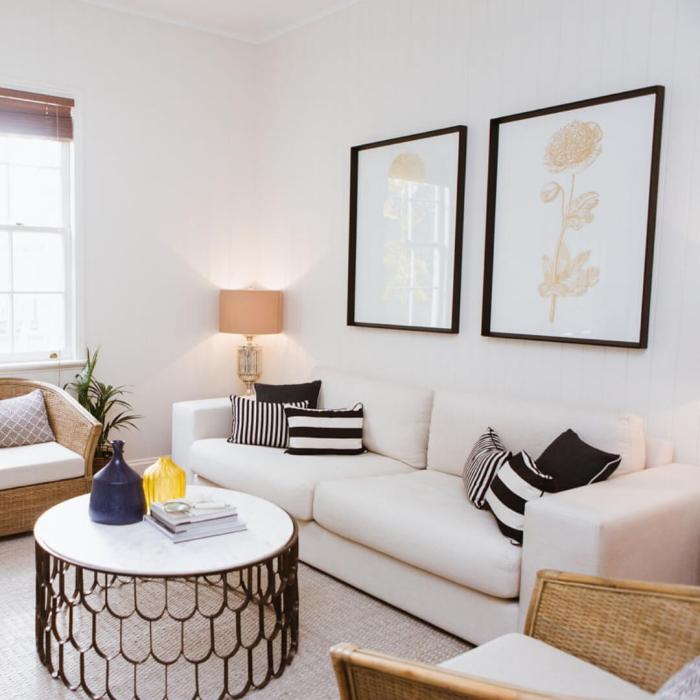
Incorporating personal items into your home’s design is crucial for creating a space that reflects your unique personality and experiences. A scientifically proven method for achieving this involves a balance between carefully curated personal effects and the overall aesthetic of the space. Over-cluttering, however, can negate the positive effects and lead to feelings of stress and overwhelm, as studies in environmental psychology have shown.
Therefore, a mindful approach is essential.Personal items, thoughtfully integrated, can significantly enhance the visual appeal and emotional connection to your home. This section explores strategies for successfully incorporating personal belongings while maintaining a cohesive and stylish environment.
Methods for Stylishly Incorporating Personal Items
The key to successfully integrating personal items lies in thoughtful curation and strategic display. Avoid simply piling items haphazardly; instead, consider the visual weight and the narrative each item contributes to the overall design. For example, a collection of vintage postcards could be framed and hung as a gallery wall, telling a story of travels and memories. Alternatively, a cherished collection of ceramic figurines could be displayed on tiered shelves, creating visual interest and a sense of deliberate arrangement.
The arrangement should consider principles of visual hierarchy, placing the most important or visually striking items at eye level or in prominent locations.
Avoiding Overwhelm: The Power of Curated Collections
The principle of “less is more” is particularly relevant when incorporating personal items. Over-cluttering creates visual noise, distracting from the overall design and potentially causing feelings of anxiety and stress. Psychologists have linked cluttered environments to increased cortisol levels (the stress hormone). To counter this, carefully select only your most meaningful and visually appealing items. Consider rotating items in and out of display to maintain freshness and prevent visual fatigue.
For example, if you have a large collection of books, only display those with visually appealing covers or those that hold particular sentimental value. The rest can be stored neatly in shelves or cabinets.
Blending Personal Style with Current Design Trends
Successfully blending personal style with current trends involves identifying common threads. Current design trends often emphasize natural materials, clean lines, and a sense of calm. If your personal style leans towards eclecticism, you can incorporate these trends by choosing natural wood furniture, minimizing clutter, and using a calming color palette as a backdrop for your more vibrant personal items.
For example, a collection of brightly colored vintage textiles could be displayed against a backdrop of neutral-toned walls and natural fiber rugs, creating a visually appealing contrast. This approach leverages the principles of design harmony, ensuring your personal style complements and enhances, rather than clashes with, current trends.
Visually Appealing Display Techniques
Several techniques can enhance the visual appeal of personal items. Grouping similar items together creates a cohesive look, minimizing visual clutter. For instance, a collection of framed photographs can be arranged on a wall to form a gallery, while a collection of small sculptures can be displayed on a mantelpiece or shelf. Using display cases or shadow boxes can add a layer of sophistication and protection to delicate or valuable items.
Varying heights and textures also adds visual interest; a mix of tall and short objects, rough and smooth surfaces, will create a more dynamic and engaging display. This approach is supported by Gestalt principles of visual perception, which emphasize the importance of grouping and organization in creating a visually pleasing experience.
Ultimately, creating a stylish home is a deeply personal process. By applying the principles of decluttering, thoughtful color selection, strategic furniture placement, effective lighting, and the careful incorporation of textiles and accessories, you can transform your living space. Remember, the most successful designs blend functionality with aesthetic appeal, reflecting your unique style and creating a home that nurtures your well-being.
The journey is as rewarding as the destination – enjoy the process of crafting your perfect sanctuary.
Clarifying Questions
What are some affordable ways to add style to my home?
Repurposing existing items, using affordable DIY projects (like painting walls or refinishing furniture), and shopping secondhand stores or online marketplaces for unique pieces are cost-effective ways to elevate your home’s style.
How can I incorporate my personal style without making it look cluttered?
Curate your personal items, selecting only those most meaningful and visually appealing. Group similar items together and display them strategically, using methods like shadow boxes or carefully arranged shelves, to avoid overwhelming the space.
How do I choose the right size rug for my living room?
Ideally, a rug should extend beyond the edges of your furniture, allowing at least the front legs of your seating to rest on it. For smaller spaces, a smaller rug can define the seating area. Consider the room’s dimensions and the size of your furniture to find the best fit.
How often should I declutter my home?
Regular decluttering, even if it’s just for a short time each week, is beneficial. A seasonal deep clean and declutter is recommended to maintain a sense of order and prevent clutter from accumulating.
What if I don’t have a natural light source in a room?
Layer lighting! Combine ambient lighting (overhead), task lighting (desk lamps), and accent lighting (to highlight features) to create a warm and inviting atmosphere. Opt for warmer-toned light bulbs to compensate for the lack of natural light.
Read More: Kanavino.org
